On 30th June 2021 I was a speaker at the Transport Community and Konrad Adenauer Stiftung Rail Summer School in Belgrade. There’s just one caveat, I told Matej Zakonjšek the Director of Transport Community who invited me: I am going to make the trip to Belgrade from Berlin by train. Even getting to Belgrade by rail was problem enough (how I actually did it is explained in the slides I presented at the event) but – as I expected – the trip was an extraordinary and eye opening experience. There is no substitute for seeing things with your own eyes to make sense of what you have previously only read in articles, and this was then complemented with numerous conversations with civil servants and experts in Belgrade. This blog post is my conclusion of those combined observations and discussions.
The short of it: the plans Serbia has for its railways all make sense, but there are a whole series of headaches to overcome that each present considerable risks. So read on and I will do my best to explain each of them in turn…
Contents
- Eyewitness experience on the Budapest – Kelebia – Subotica – Novi Sad route
- Current and future plans for infrastructure upgrades
- International routes – every border with its own problem
- Re-opening Novi Sad – Beograd Centar, and the Centar station headache
- The Bar-Topčider anomaly
Eyewitness experience on the Budapest – Kelebia – Subotica – Novi Sad route
Due to timetable changes imposed by the COVID pandemic, the only viable Berlin – Beograd route involved a night train from Berlin to Vienna or Budapest, and then from Budapest Keleti the MÁV regional train to Kelebia (the last station in Hungary), crossing the border to Subotica in Serbia, then the Srbija Voz train to Novi Sad, and finally a coach from Novi Sad to Beograd (more about that below).
The Hungarian side
Online tickets for Budapest – Kelebia – Subotica are not available – you have to go to the ticket office in Budapest for these. MÁV’s page about the route is only in Hungarian, but at least there is a page – and it tells me it will cost me €22,70 for a return. By contrast you have to dig into a PDF for data on the Serbian side! Information at Budapest Keleti station is also somewhat strange – the main board announces Subotica, the platform board Kelebia. The Budapest – Kelebia route has clearly seen better days – on my route from Budapest it was a old locomotive hauled train with open windows and sticky plastic seats, and we did about 60km/h most of the way. The train skips a few stations immediately after leaving Budapest, but thereafter stops at every station – some of them tiny and with no village in sight. The clientele on board is mostly elderly people travelling to the villages, with very few passengers travelling the whole way from Budapest to Kelebia. On the return the train was modern, the speeds the same. But at least Hungarian railways MÁV have kept the line in a reasonable state. That did not prepare me for what would come next…
The border and the Serbian side
The reason for the signage confusion in Budapest is that a Srbija Voz DMU runs a kind of shuttle back and forth between Kelebia and Subotica. Passport controls are conducted on board the train – while stationary in Kelebia for the Hungarian side, and stationary in Subotica station on the Serbian side. Controls are pretty efficient – 15-20 minutes for each. Just be aware that when heading from Serbia into Hungary the train can leave up to 30 minutes earlier than the scheduled 14:02 departure so as to allow time for the border controls to be conducted.
After arriving in Subotica the train then waits for 45 minutes before then continuing to Novi Sad – enough time to leave the station, get some money, and go to the ticket office and buy the ticket. There nearest cash machine is opposite the Reichel Palace – a pleasant tourist diversion! A second class single ticket Subotica – Novi Sad is 504,00 rsd (€4,26). This train is used mostly by elderly people (who struggle on the ridiculously steep steps up into the DMU), and some agricultural workers from the villages. Rather few passengers make the trip the whole way from Subotica to Novi Sad.
The Subotica – Novi Sad train is the worst railway service I have ever taken (and I have taken some pretty bad ones) – because the rail infrastructure is so poor. OpenRailwayMap reckons 40km/h is the maximum speed, but we seldom even reached that. The passenger trains are run with DMUs, although the line is electrified (and freight is still hauled with electric locomotives) – I presume because Srbija Voz does not want to risk the derailment of its modern Stadler EMUs – because the track is that bad and bumpy. The train is timetabled to take 2 hours 32 minutes for a trip of 100km, but the train I was on racked up a delay of 45 minutes for no obvious reason. The land is flat, the route is pretty much dead straight – so there is only one cause: lack of maintenance. It is as if everything has simply been left to degrade for a couple of decades.
Speeds and electrification you can see here – click to enlarge:
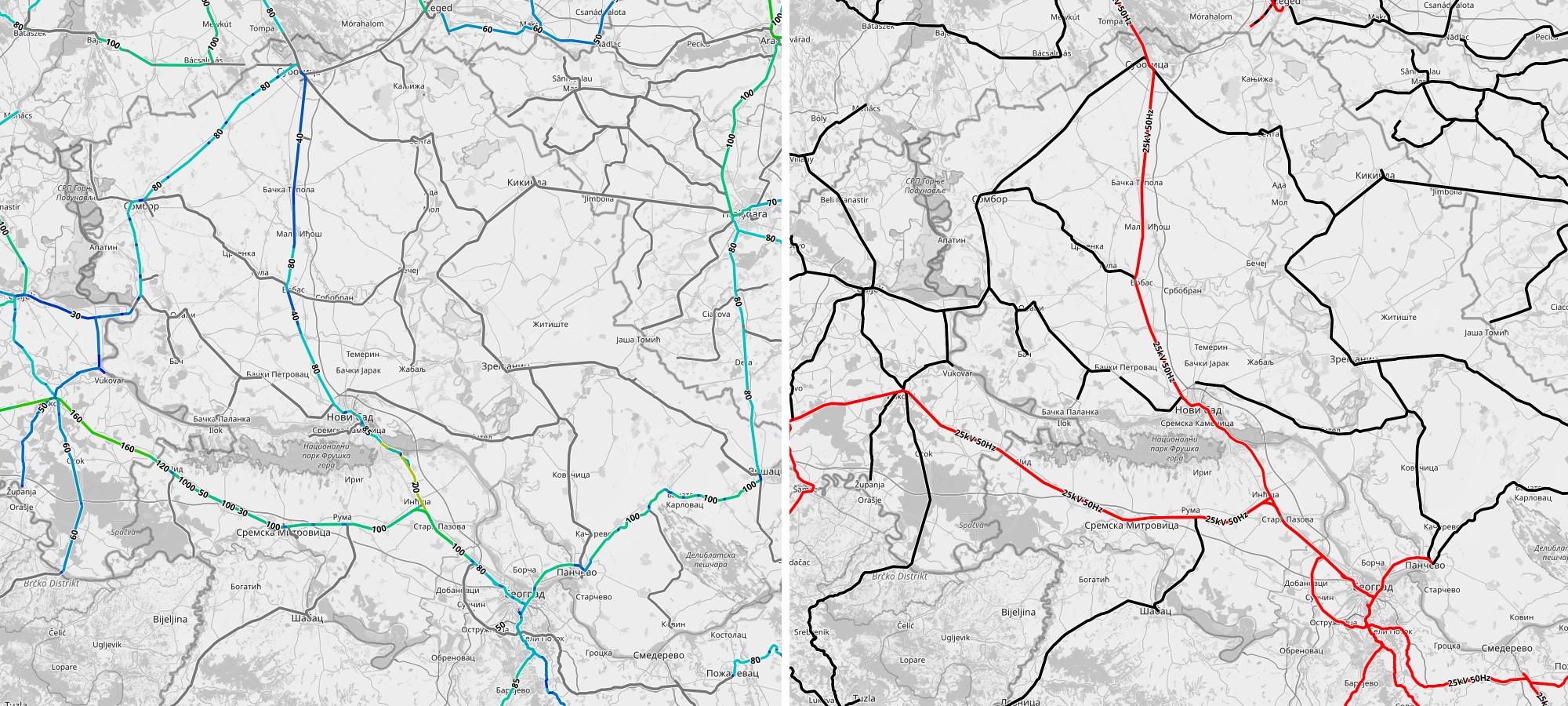
Source: OpenRailwayMap
The final part of the trip – Novi Sad to Belgrade – was by coach, because the railway between Novi Sad and Stara Pazova has been closed since 2019 for reconstruction works. It is due to open again in 2022, and as Seat61 points out, there is no rail replacement bus service. If you are attempting this trip there is no need to worry though – the bus proved to be one of the easier parts of the trip. Novi Sad bus station is right next to the train station, is very orderly, and I could book a ticket on the next express bus to Belgrade on the spot – the bus powered down the motorway in just over an hour.
But while sat there at Novi Sad bus station it dawned on me that my initial assumption – before my trip I thought that closing the whole Novi Sad to Belgrade rail line for 3 years without some sort of alternative rail service was wrong – was actually incorrect. If your infrastructure has been left to rot to the extent to which it has on Subotica – Novi Sad, and very few people are taking the passenger trains anyway, then be done with it, close the line, and rebuild properly.
Current and future plans for infrastructure upgrades
So how, I began to ask myself, should a railway this run down begin to be rebuilt? And I started to ask around in the margins of the Transport Community event at which I was a speaker. And I was provided two maps of the current and future infrastructure projects for the railways in Serbia – by the Ministry of Construction, Transport and Infrastructure. PDF versions of the maps – Current projects and Planned projects – are available too.
Current Projects
Once the Novi Sad to Stara Pazova section of the Novi Sad to Belgrade line re-opens in 2022, the focus will move to the Subotica to Novi Sad section – that will be completely closed and double tracked (it is all single track currently). Given the terrain is flat and the alignment straight this will be a faster task, and should be completed by 2024 – and based on my experiences taking the train there this makes sense! Also this time there will be an alternative – passenger trains from Subotica to Sombor and Sombor to Novi Sad will continue to run, and some freight will be routed that way, and some via Zrenjanin. This all makes sense.
Further south the rebuilding of Jajinci – Maia Krsna, and improvements around Niš, make sense to complete now, in light of the projects to come further into the future.
Future Projects
The reconstruction of the Croatian border to Stara Pazova line, and the reconstruction of Beograd to Niš come next. In each case reconstruction will take place using the existing alignment, and with one track still running while the other is upgraded, to minimise the disruption. The rebuilding of Jajinci – Maia Krsna mentioned above makes this later upgrading to Niš simpler, by providing an alternative route into Belgrade.
Next come the upgrades marked in green, notably the Niš – Dimitrovgrad route, onwards to Sofia, that will also be electrified. The route is slated to be closed for just a few months for the upgrade. That will happen before the Niš – Prešovo line is upgraded, as that is the biggest headache – more than 30km of the route is in an inaccessible gorge and the upgrade will need some months of closure, and while this is the case freight could be routed from Thessaloniki via Sofia and Dimitrovgrad instead.
Valjevo – Vrbnica and Pančevo – Vršac will be restored to the speed they were designed for – 120km/h – speeding up the cross border routes to Montenegro and Romania respectively. Subotica via Horgoš to Szeged will be restored, and will offer a faster route to Budapest – Szeged to the Hungarian capital is faster than the line from Kelebia.
In summary: these projects all make sense, and doing them in this order is logical as well. And the extent of the disruption caused by upgrades in future ought to be considerably less than that caused by the current Stara Pazova – Novi Sad upgrade.
International routes – every border with its own problem
Even where the infrastructure is in working order, what about the prospects for passenger trains to even run?
At the time of writing, Kelebia – Subotica (from Hungary) and Bielo Polje – Vrbnica (from Montenegro, for the Bar-Belgrade train) are the only regular international services running to/from Serbia. The Optima Express transits Serbia without stopping (from Croatia, to Bulgaria), so will not be examined further.
.
Border to Hungary
As explained in the eyewitness report above, the infrastructure here is lousy, but the border crossing works. And even when the Subotica – Novi Sad line is closed next year, it will still be possible to enter Serbia by rail this way, travelling via Sombor to Novi Sad instead. However while the infrastructure is being upgraded the chances that a long distance daytime EuroCity service (the old Ivo Andrić express) resumes on this route are slim.
While works on the Serbian side of the border proceed apace, there are no signs that work Hungarian side between Kelebia and Budapest are to start. Medium term the best bet to speed up connections to Budapest is for the Subotica – Horgoš – Szeged line to re-open – with one change in Szeged that would give a Budapest – Subotica trip time of about 3 hours, an improvement of about 75 minutes over the current route via Kelebia.
Overall: it is going to take some time before improvements on this route are felt by passengers, but because the political relationships are good here, the prospect for improvement is also reasonable.
.
Border to Romania
At the moment no passenger trains cross the Serbia – Romania border. Srbija Voz runs 6 trains a day Beograd Centra – Vršac (trip time: 1 hour 45 mins), and CFR runs 3 trains a day Timișoara to Stamora Moravița (trip time: 1 hour 20 minutes), but nothing runs on the 20km between the Stamora Moravița and Vršac. Tracks on both sides are not electrified here, so the prospects of long distance daytime or nighttime trains are low here. The reason no regional trains run through here (previously CFR services ran as far as Vršac, with a convenient change for Beograd) is because of a financial dispute between the two railway companies that needs to be resolved by the politicians on both sides.
Overall: prospect of cross border services resuming here in the next 12 months are good, although this is only ever going to be a slow speed diesel connection.
.
Border to Bulgaria
Here the politics is sour – Bulgaria and Serbia had agreed to perform border and customs controls jointly – at Dimitrovgrad on the Serbian side of the border – but after building of the new border infrastructure had already started, Bulgaria pulled out. The line between Niš and Dimitrovgrad is not electrified – and this is only due to be upgraded further into the future (see above). At the moment there is no cross border service at all here – it is suspended due to COVID (Bulgarian trains run only as far as Dragoman, the last station on the Bulgarian side, and do not reach Dimitrovgrad) – but the trains show as still crossing the border in DB’s online timetable! When, eventually, the border re-opens, the situation will return to being like the one outlined by Seat 61 here – awful timetabling for the one daily service between Niš and Dimitrovgrad, meaning there is no way to do Beograd – Sofia in one day (although in the opposite direction it does work).
Overall: this is a disaster. The infrastructure is awful, the service awful, the politics awful. Post-COVID a better timetable for Niš – Dimitrovgrad could alleviate the situation somewhat, but do not even hold your breath for that. Somehow the Optima Express uses this line, and makes it work better than the two state owned railways can manage for regular passengers – that’s maddening.
.
Border to Macedonia
The politics here is much better than at the border to Bulgaria, but the infrastructure is not. The line from Niš to Preševo is slow and outdated, and hard to upgrade as it runs in a gorge. 2 trains a day run between Niš and Preševo, but there is no cross border service, and none is planned.
Overall: freight takes priority here, and so any resumption of passenger operations looks to be a long shot. Don’t hold your breath.
.
Border to Montenegro
The Beograd – Bar daytime and nighttime trains are running normally again as the COVID situation in Serbia has improved. Doing one set of border controls – at Bielo Polje on the Montenegrin side of the border – is in planning and will shave almost an hour off the journey. Medium term the plan is also to upgrade the Vrbnica – Valjevo section to its design speed of 120km/h, and to do these works while trains continue to run.
Overall: this line is of symbolic importance to Serbia, and while any major improvement is a long way off, it will continue to run.
.
Border to Croatia
The border with the best infrastructure (two tracks, electrified), and nevertheless one at the time of writing where there is no cross border passenger service – officially suspended due to COVID. Normally one daytime train runs Zagreb – Beograd via Vincovci and Šid, but this is suspended without any prospect of its imminent return. The reason officially is that on both the Serbian and Croatian sides of the border there are problems with Public Service Obligation (PSO) contracts to support this service that had been loss making – essentially it is a political problem. HZPP runs 8 trains a day Zagreb – Vincovci (fastest takes 3 hours 20 minutes), and Srbija Voz runs 4 trains a day Šid – Batajnica (suburbs of Beograd – limited due to engineering works), but nothing runs on the 35km between Vincovci and Šid. Once the engineering works are completed here (connected to the Novi Sad – Beograd upgrade), a journey time of 5 to 6 hours between Zagreb and Beograd would be possible – competitive with the bus. A daytime Vienna – Graz – Maribor – Zagreb – Beograd service would even be viable.
The one train a day that crosses the Erdut – Bogojevo border crossing – a single track diesel line – is currently suspended due to COVID, and might return medium term.
Overall: the most frustrating of all. The infrastructure here is far better than at any other border, and on the Serbian side will be better still once the Novi Sad to Beograd works are complete by the end of 2021. But there seems to be little political will to solve the problems here.
.
Not covered
The lines between Serbia and Kosovo will not re-open because of the politics of the region. There is no prospect of passenger trains operating to Bosnia and Herzegovina via Brazina or to Romania via Kikinda – Jimbolia.
Re-opening Novi Sad – Beograd Centar, and the Centar station headache
In planning since the early 1970s, and finally opened in July 2018, the new Beograd Centar (colloquially known as Prokop from the neighbourhood where it is located) replaces the old main station (that was a terminus) with a through station. The locations of new and old stations are shown on this map:

Source: Open Street Map
The essential plan is a sound one – the new station, and the tunnels to connect it to Pančevo to the north, and towards Valjevo to the south, plus the new Sava bridge towards Novi Beograd, all make logical sense. The problem however, like so much in Belgrade, is with how the plans are carried out.
This is what the station looks like right now, viewed from the east:
The main entrance:
Above ground entrance to the platforms:
Lousy public transport connections – 2 buses:
Platform level:
Eventually it is meant to look like this:
So what does this mean, short term, for the prospects of the revival of railways in Serbia?
I am quite worried.
By the end of 2021 the 200km/h line from Novi Sad via Stara Pazova to Beograd will be complete. 3 200km/h double decker trains order from Stadler will be shipped to Serbia by the end of this year. Novi Sad station is shabby but at least functional, with a bus station right beside it and good connections into the city.
Passengers will take just 37 minutes to travel from Novi Sad to Beograd… only to then be turfed out at an unfinished station that has just two bus connections into the city, and no tram or trolleybus. The station itself is just over 1 kilometre from Slavija square, with its hub of tram and bus lines, but it feels like another world.
Adding a few minutes to the trip, and stopping the Novi Sad express services in Novi Beograd would hence make good sense, perhaps just initially – because that station is at least connected to the tram network.
The Bar-Topčider anomaly
As if the problems of the ill-connected central station were not enough, the situation for the most prestigious international train – the Bar – Beograd service – is stranger still. Because this train conveys cars in car transporter carriages (as well as passengers in regular carriages) it does not even serve Centar station, but the terminus is instead Topčider station, further south still than Centar – because there is no platform to unload cars at Centar. Topčider is a charming station, but is not really a fitting destination for an international service! It strikes me that building a car loading platform at Rakovica or Resnik on the edge of Belgrade, and then running the train from Bar to Centar station would make a lot more sense.
Topčider station building:
Night train carriages for Bar on the right, old Blue Train locomotive on the left:
And as if all of that were not enough, the tram line to Topčider is now out of action – the tracks all look OK, but the overhead wires have been removed. So the only advantage that station had over Centar – better integration with Belgrade’s local public transport system – has also disappeared.


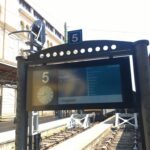
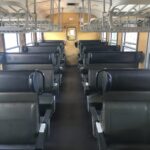
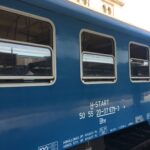


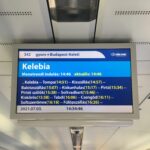


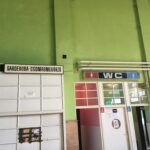
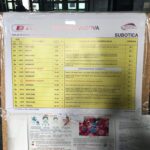
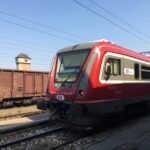

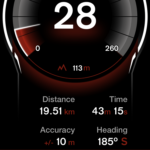

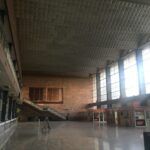
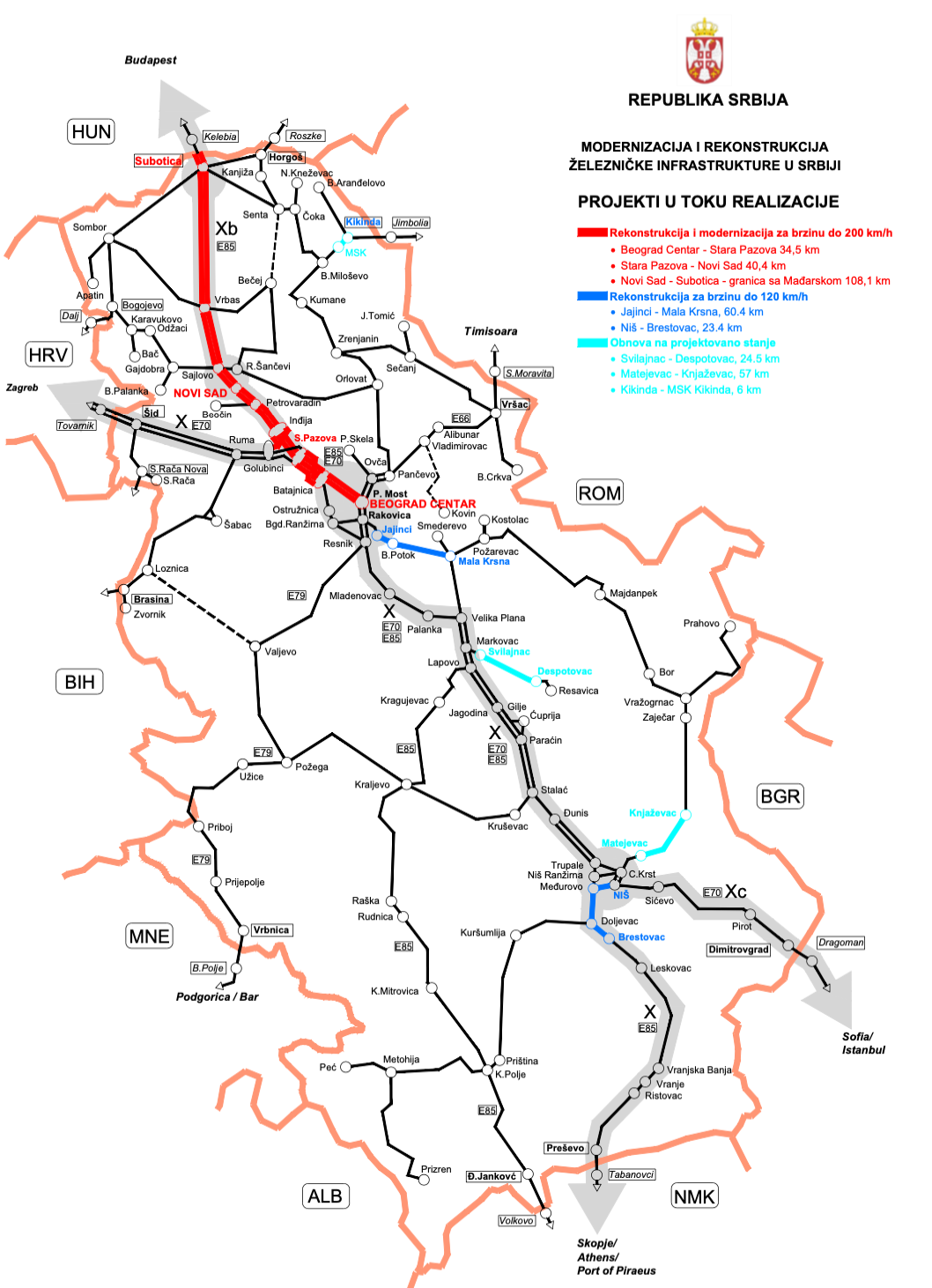
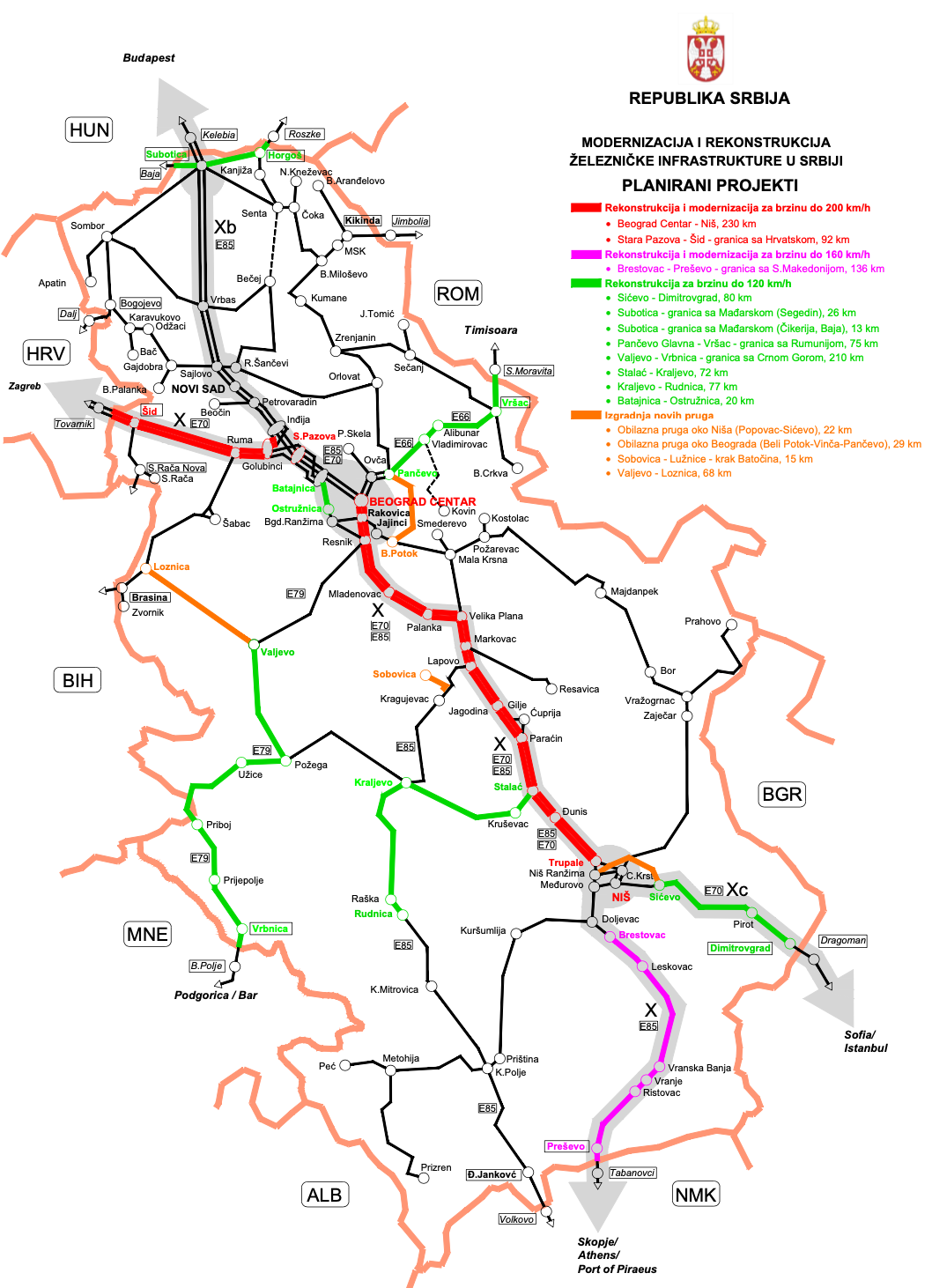
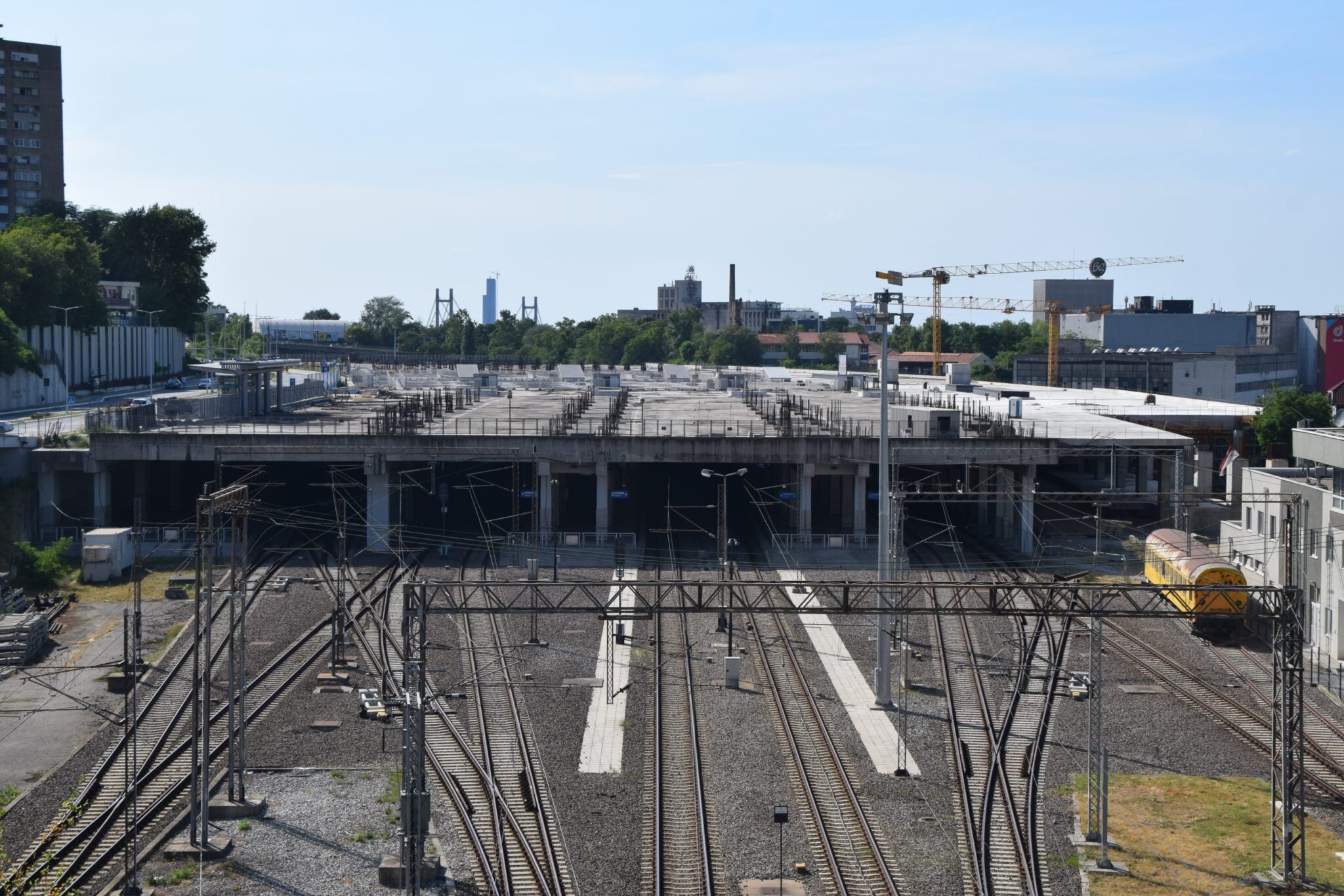
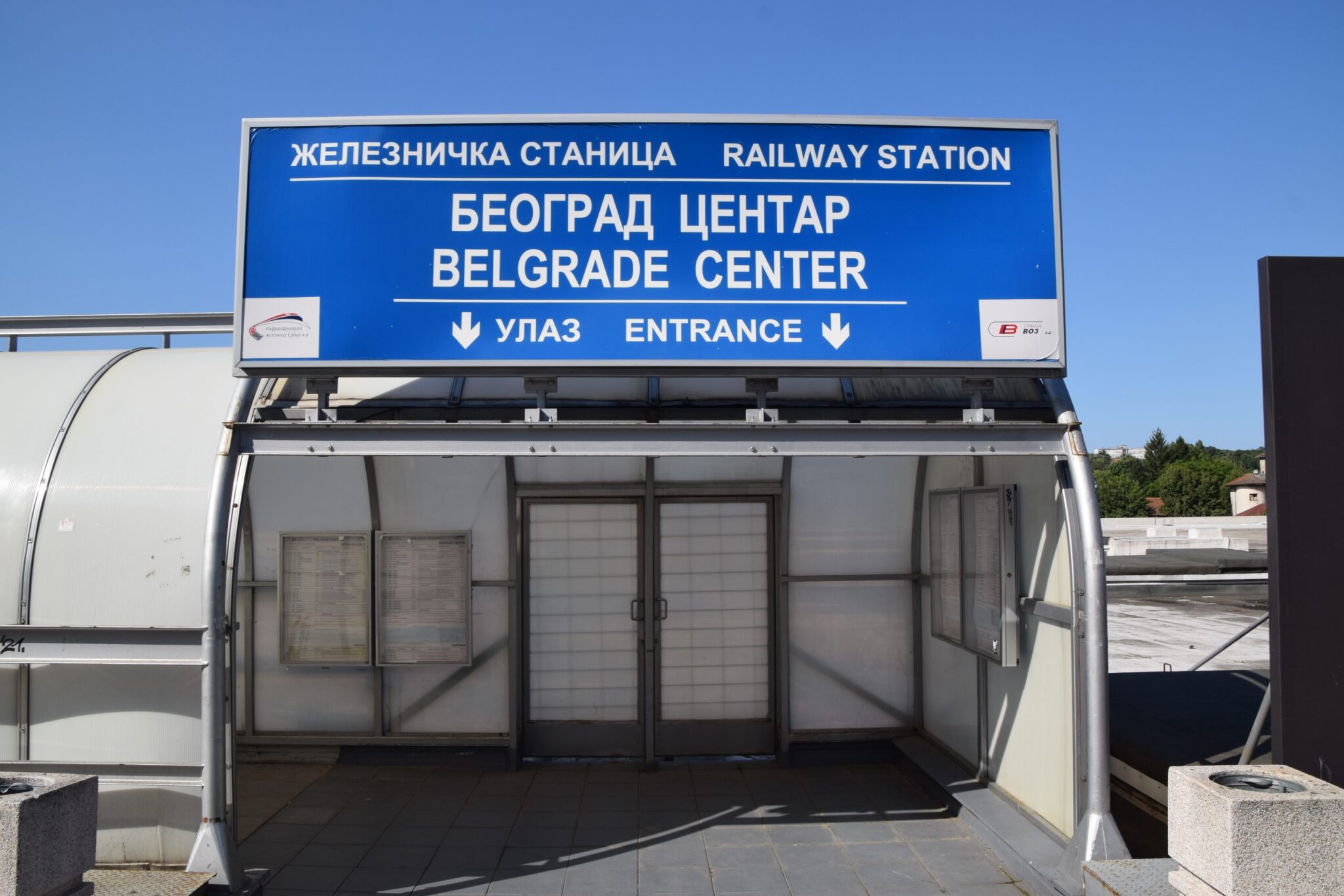

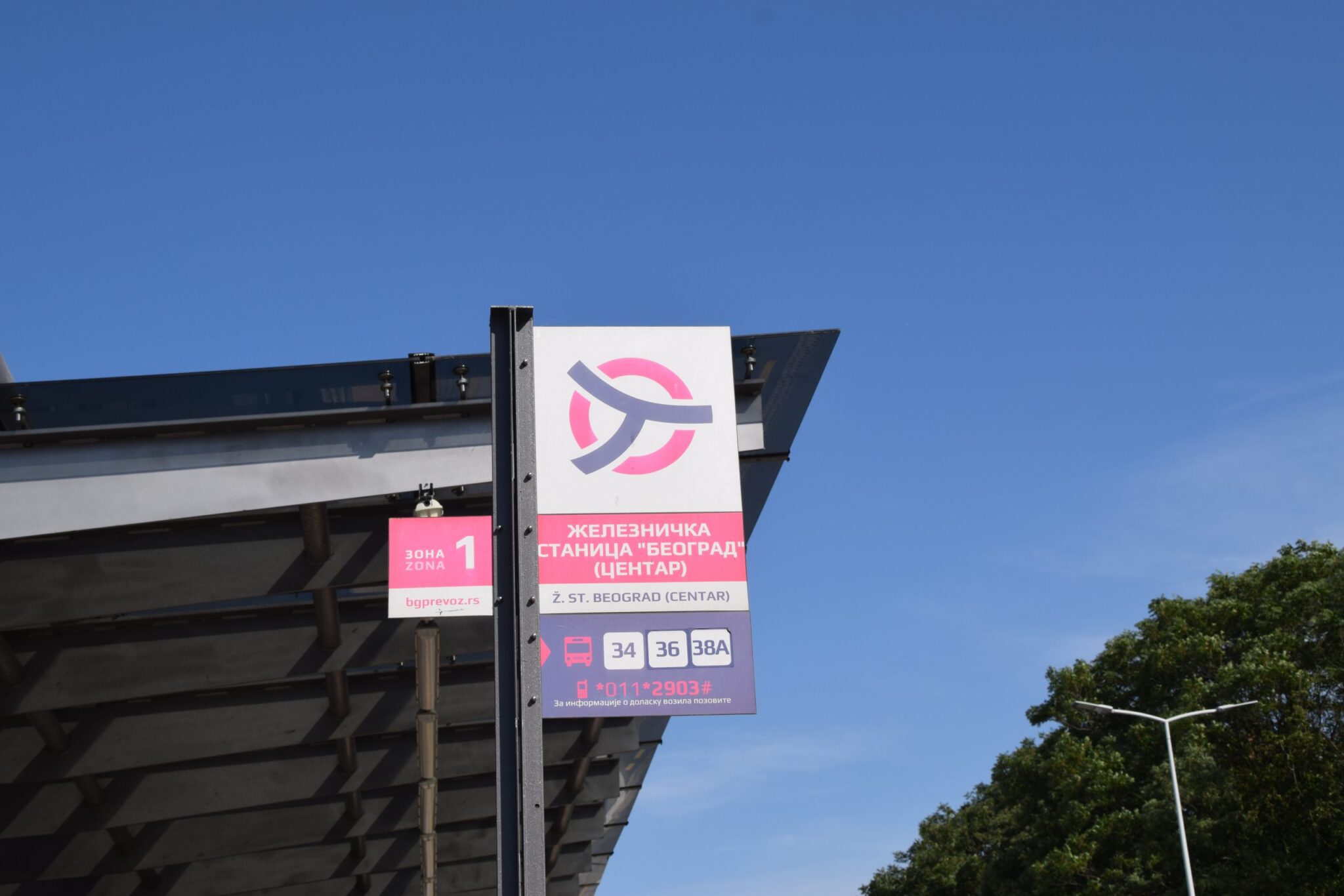
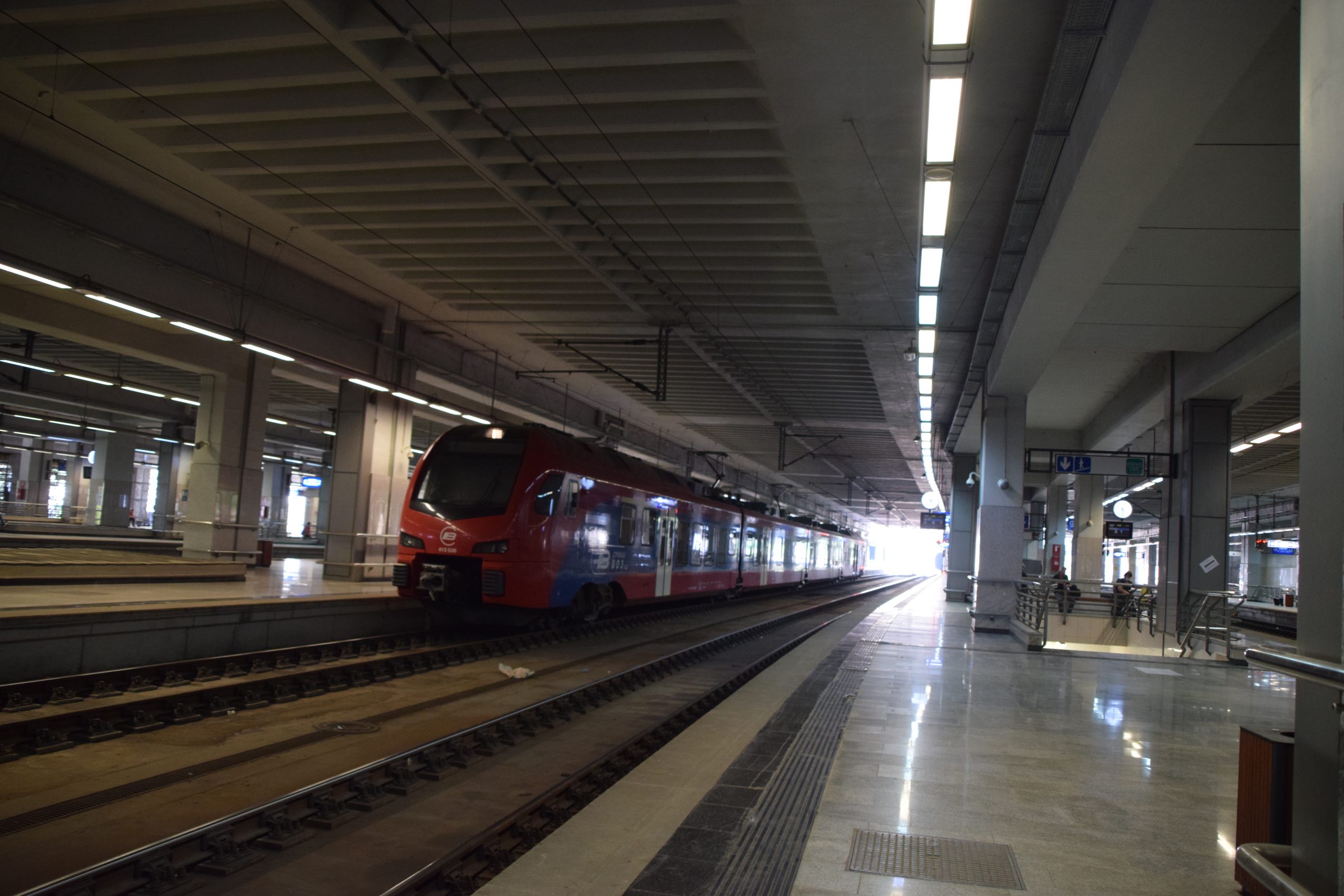
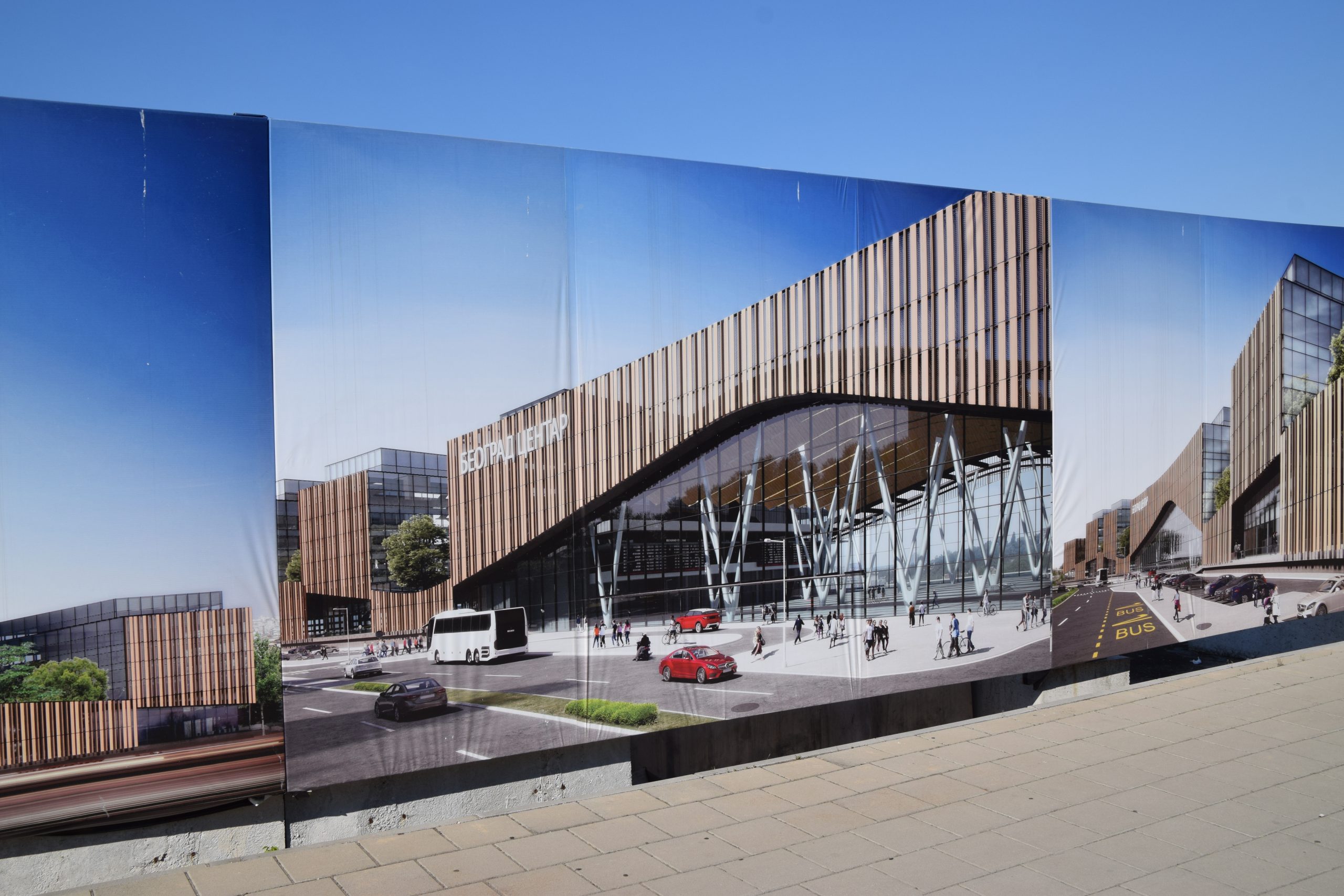


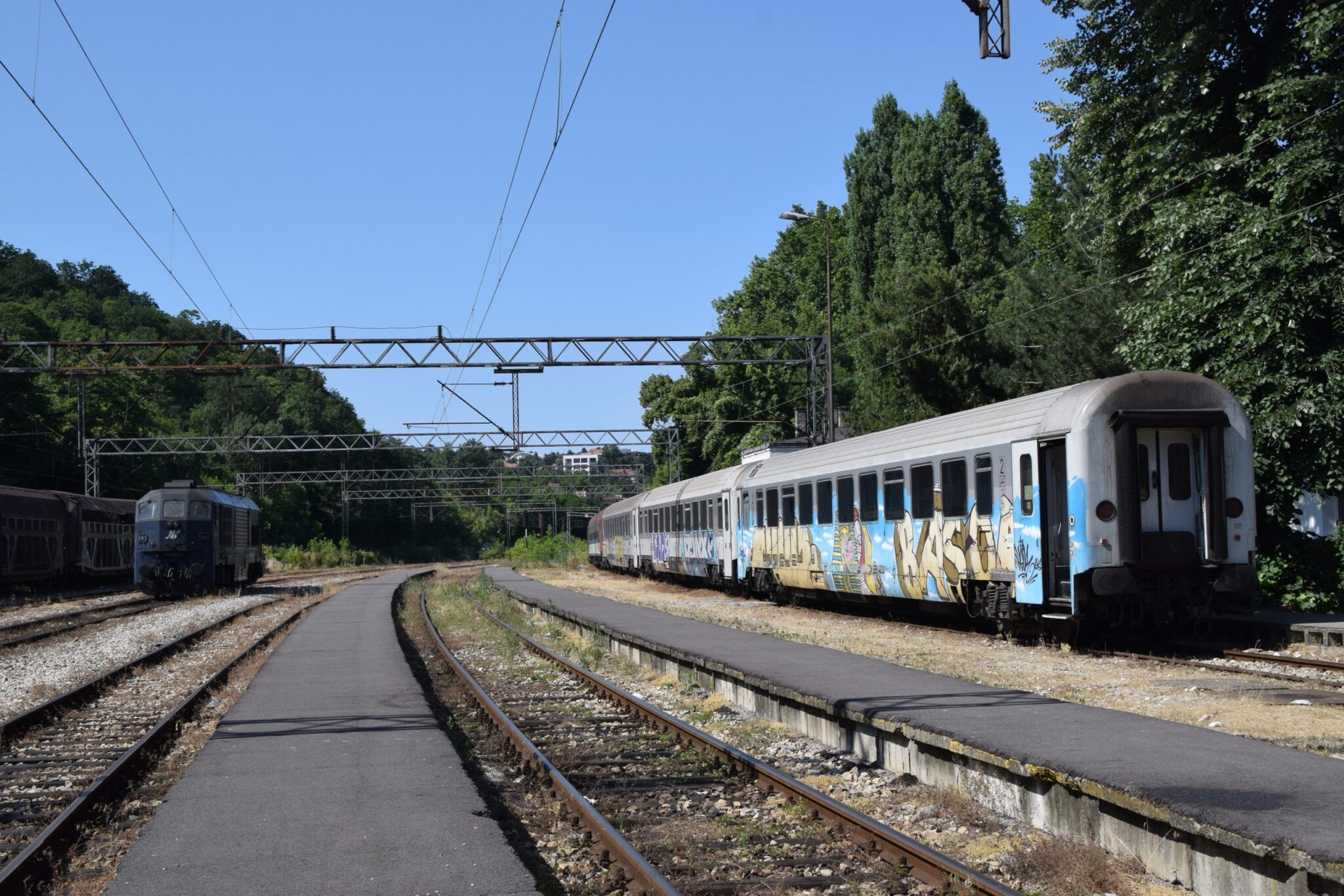
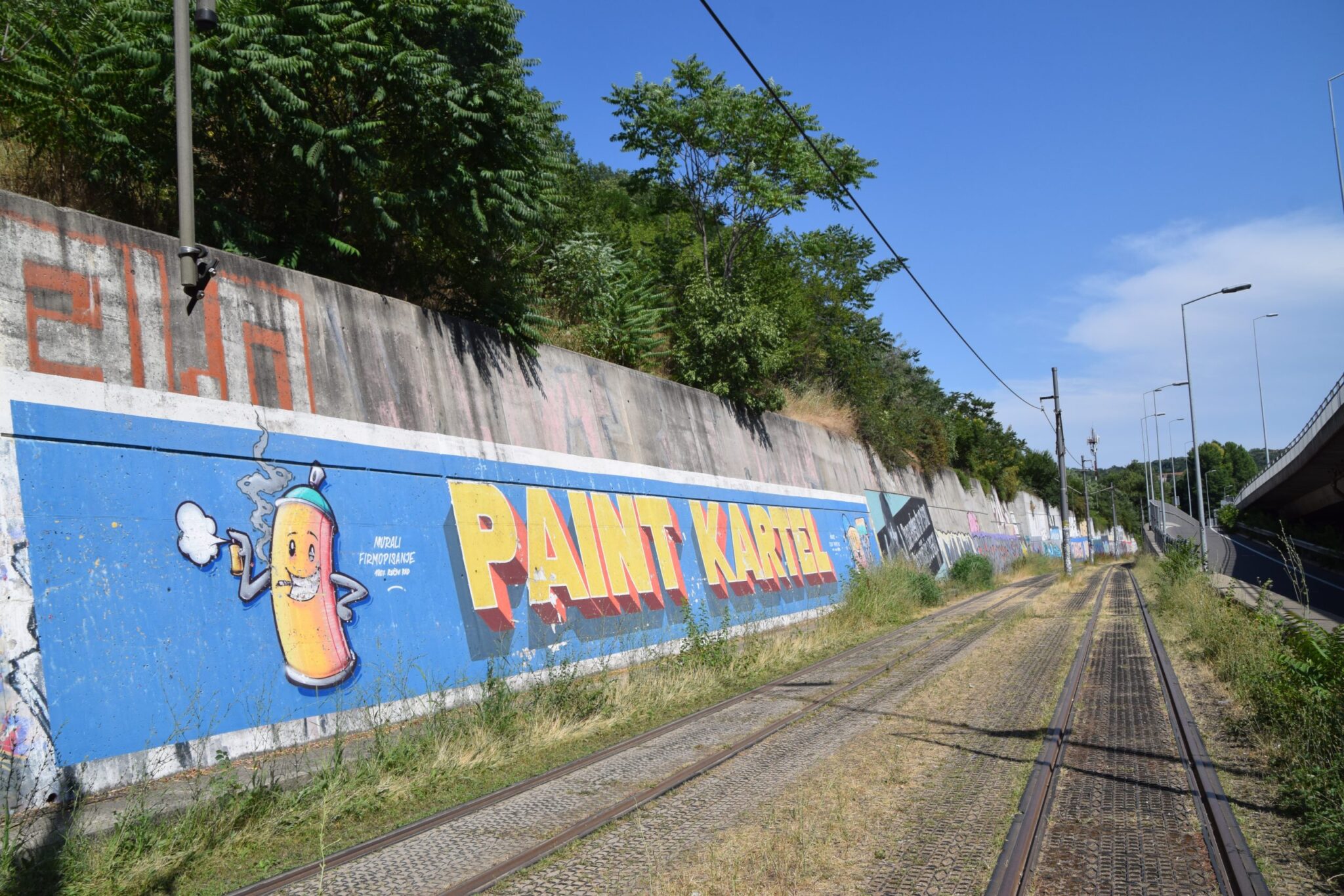
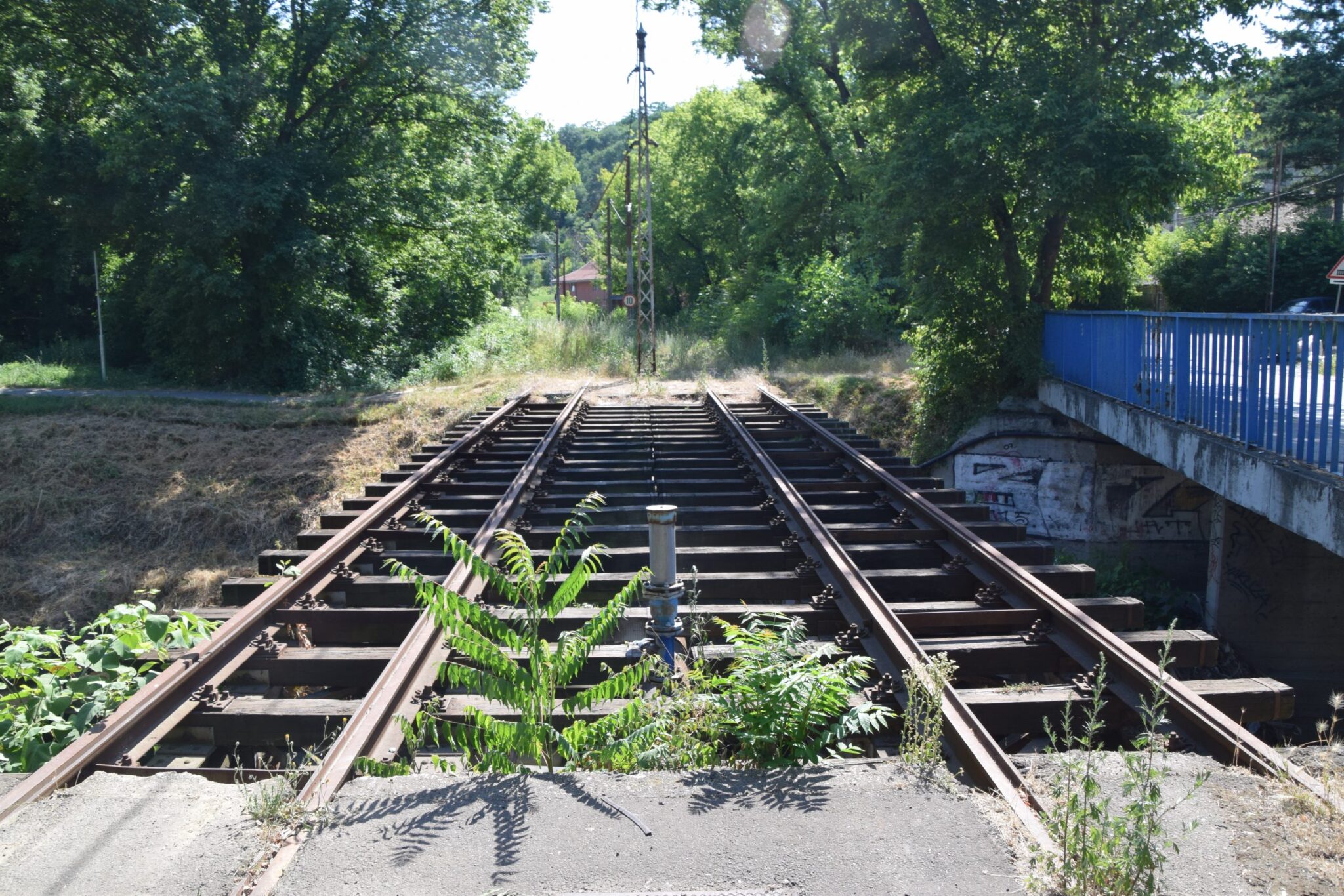













Great piece! You don’t seem to cover the Chinese Belt and Road aspects of the Beograd-Budapest line. Why not?
https://thediplomat.com/2020/04/china-and-the-budapest-belgrade-railway-saga/
Because I have no way to assess that. As that article you post states, what was promised versus what is happening with regard to China’s influence do not match up – and I am simply not privy to any further information. Hence I reported what I saw and what I made of it. Sorry.
Pingback: Turkmenistan's 'shocking' population decline: Elsewhere in emerging Europe
Hello, can I have a question, Neither Montenegro railways or Serbia railways have the daytime trains Belgrad-Bar anymore. I cannot find anywhere the reason why they are cancelled? Only night time trains available. Any idea?
Daytime trains are, for now, cancelled. But I am sorry – I don’t know why, or if they will return.